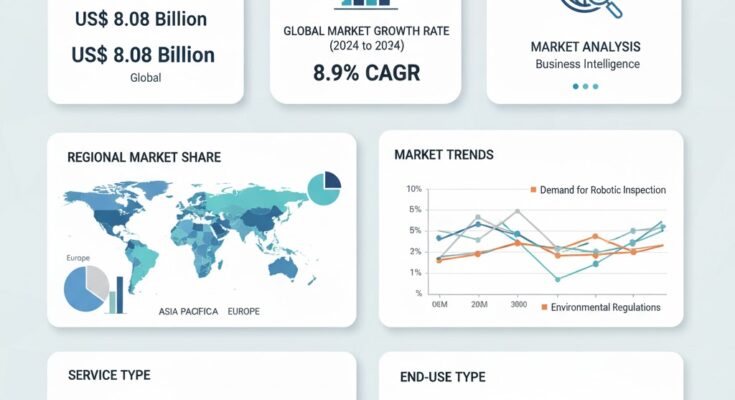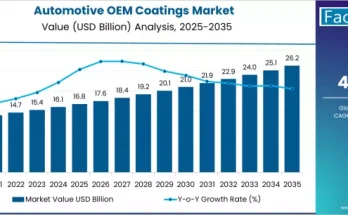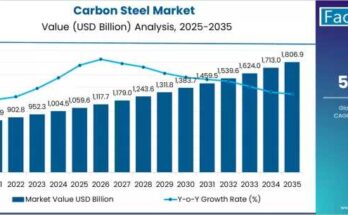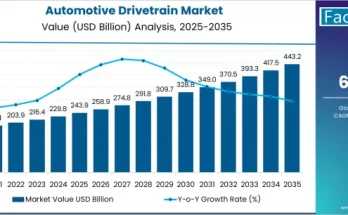The global ship hull inspection services market is poised for robust expansion as maritime operators increasingly prioritize vessel safety, operational efficiency, and regulatory compliance. According to a recent industry report published by Fact.MR, revenue from ship hull inspection services has been valued at US$ 3.45 billion in 2024 and is projected to rise at a CAGR of 8.9% through 2034. Consequently, the market size is forecasted to reach US$ 8.08 billion by the end of 2034.
The growing need to prevent corrosion, improve fuel efficiency, and ensure the structural integrity of vessels is driving the adoption of advanced inspection technologies such as remotely operated vehicles (ROVs), underwater drones, and AI-based imaging systems.
Strategic Market Drivers
- Rising Focus on Maritime Safety and Preventive Maintenance
Global shipping companies are investing heavily in regular hull inspections to mitigate operational risks, reduce maintenance costs, and extend vessel lifespan. The inspection process helps detect early signs of corrosion, cracks, or biofouling, ensuring compliance with international maritime safety regulations.
As ship sizes increase and environmental regulations tighten, demand for automated and digital hull inspection services continues to surge, offering safer and faster alternatives to traditional diver-based methods.
- Technological Advancements in Underwater Inspection Systems
The integration of robotics, high-resolution imaging, and artificial intelligence is revolutionizing ship hull inspection.
ROV- and drone-based systems can operate in deep waters and harsh conditions, capturing detailed visual data while minimizing human intervention.
AI algorithms are increasingly used to analyze collected data, identify anomalies, and predict maintenance needs—enhancing decision-making for fleet operators.
- Growing Emphasis on Environmental Compliance and Energy Efficiency
With the International Maritime Organization (IMO) enforcing stricter environmental standards, shipowners are adopting inspection services that help reduce drag and improve hull performance. Regular cleaning and inspection of hull surfaces can significantly lower fuel consumption and carbon emissions, aligning with global decarbonization goals.
This trend is fostering demand for eco-friendly inspection solutions and predictive maintenance technologies.
Regional Growth Highlights
East Asia: Maritime and Shipbuilding Powerhouse
East Asia dominates global ship hull inspection demand, led by China, Japan, and South Korea, which host some of the world’s largest shipbuilding and port operations.
Rising vessel traffic, stringent safety standards, and the adoption of automation in ship maintenance are propelling market growth in the region. Additionally, local technology providers are developing advanced ROV and AI-based solutions to support the region’s expanding commercial fleet.
Europe: Regulation-Driven Growth and Technological Leadership
Europe’s strong maritime heritage and rigorous environmental regulations drive steady demand for high-precision inspection services.
Countries like Norway, the U.K., and Germany are leading adopters of drone-based hull inspection and digital maintenance platforms. Investments in sustainable shipping and offshore energy projects further fuel regional growth.
North America: Focus on Offshore and Naval Applications
In the United States and Canada, rising offshore exploration and naval modernization projects are spurring demand for advanced hull inspection technologies.
Partnerships between maritime service providers and defense agencies are expanding, creating new growth opportunities in subsea inspection and maintenance services.
Emerging Markets: Expanding Port Infrastructure
Regions such as South Asia, the Middle East, and Latin America are witnessing rapid development in maritime infrastructure.
Government initiatives to modernize ports and strengthen coastal trade networks are driving the adoption of professional hull inspection services, particularly for cargo and oil tanker fleets.
Market Segmentation Insights
By Inspection Type
- Diver-based Inspection Services
- Remotely Operated Vehicle (ROV) Inspection
- Drone/Autonomous Underwater Vehicle (AUV) Inspection
- AI and Sensor-based Digital Inspection
By Service Type
- Visual Inspection
- Ultrasonic Thickness Measurement
- Biofouling Assessment
- Corrosion and Crack Detection
- Cleaning and Maintenance Support
By End Use
- Commercial Shipping
- Defense & Naval Vessels
- Offshore Oil & Gas Platforms
- Cruise and Passenger Ships
Challenges and Market Considerations
- High Equipment and Operation Costs: Advanced inspection tools and training can be capital-intensive, particularly for smaller operators.
- Regulatory Complexity: Diverse regional standards for maritime safety and environmental protection increase compliance burdens.
- Technical Limitations in Harsh Environments: Deep-sea or high-turbidity conditions can affect data accuracy and inspection timelines.
- Shortage of Skilled Operators: The demand for trained ROV and drone operators is outpacing current workforce availability.
Competitive Landscape
The global ship hull inspection services market is characterized by technological innovation and strategic partnerships between maritime solution providers and fleet operators.
Leading players are focusing on automation, AI-driven analytics, and sustainability to enhance inspection accuracy and reduce downtime.
Key Companies Profiled:
- DNV GL
- Nippon Kaiji Kyokai (ClassNK)
- Bureau Veritas
- Underwater Inspection Services Ltd.
- Subsea 7
- SeaBotix Inc.
- Phoenix International Holdings Inc.
- Fugro N.V.
- Deep Trekker Inc.
- Rovco Ltd.
Recent Developments
- June 2023 – Bureau Veritas launched a new AI-integrated digital hull inspection platform to enhance defect detection and reporting accuracy.
- January 2023 – DNV GL introduced an autonomous underwater drone capable of real-time data transmission for faster hull evaluations.
- September 2022 – Fugro N.V. expanded its offshore inspection fleet with hybrid ROV systems designed for deep-water hull and subsea structure inspection.
Future Outlook: Navigating Toward Automation and Sustainability
The next decade will usher in a transformative era for the ship hull inspection services market, driven by automation, digitization, and environmental stewardship.
Advances in machine learning, remote sensing, and robotics will enable predictive maintenance and real-time monitoring, ensuring safer and more cost-effective maritime operations.
As global shipping intensifies and sustainability regulations tighten, companies investing in smart, eco-conscious, and AI-powered inspection technologies will gain a decisive competitive edge steering the maritime industry toward a cleaner, safer, and more intelligent future.



